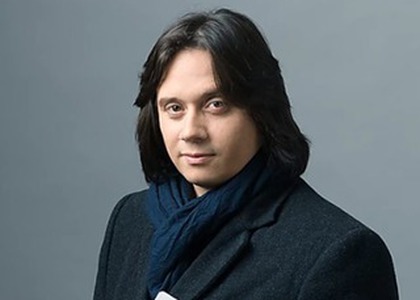> [Archived] Interviews

Interview with conductor Gabriel Bebeșelea
Today, November 29th and tomorrow, November 30th, two concerts dedicated to the National Day of Romania will take place at the Romanian Athenaeum. At the rostrum of the "George Enescu" Philharmonic will be the principal conductor of the orchestra. Members of the institution will be the soloists. More details about the programme of the concert we can learn from Gabriel Bebeșelea.
Mr. Bebeșelea, the concerts on November 29th and 30th are presented under the sign of the National Day of Romania, having an unusual programme, including from the perspective of the soloists involved, who will play the violin, cello, oboe, bassoon, clarinet, tuba and flute. What atmosphere do you intend to create through these events that have such a diverse programme?
Indeed, the two concerts of the "George Enescu" Philharmonic, taking place on November 29th and 30th, have an original programmefrom several points of view. In addition to pieces by some Romanian composers such as George Enescu, Pascal Bentoiu or Theodor Rogalski, concert pieces will be performed, with musicians of the "George Enescu" Philharmonic as soloists. Rafael Butaru, Dan and Alexandru Avramovici, Mădălina Fara, Doris Iorga, Laurențiu Sima, Laurențiu Darie and Ion Bogdan Ștefănescu are the musicians of the "George Enescu" Philharmonic who will first perform in the orchestra and then they will come to the center of the stage to perform the concert pieces as soloists. Another interesting point of view for which we said that this is a unique concert is the fact that the opening piece of this concert is a work performed very rarely and extremely rarely found in concert programmes; a piece composed by George Enescu when he was 15 years old and in Paris: the Romanian Suite, which is actually a theme with variations on the song that has become our present-day national anthem: Deșteaptă-te române.
As you were saying earlier, these concerts involve the participation of several soloists who are members of the Bucharest Philharmonic. What is the significance of this choice?
The idea is for the Bucharest audience to see the Philharmonic musicians from more perspectives. To see both the orchestral perspective, which they are able see every week, and this multifaceted version of the musicians who make up the team of the philharmonic orchestra, from a soloist perspective.
As for the Romanian composers, as you were saying, you have chosenvery rarely performed or even unique scores, such as the Romanian Suite by George Enescu, to which are added the Transylvanian Suite by Pascal Bentoiu and the Romanian Dance no. 2 for tuba and orchestra by Ionel Dumitru, but also the Three Romanian Dances by Theodor Rogalski. How do you think the public will receive these musical discoveries? The Romanian Dances by Rogalski are well-known, but we definitely need to learn more about the other pieces. Could you help us?
The public will undoubtedly appreciate this infusion, let's say, of Romanian music, because, after all, it is a concert dedicated to the National Day, and from this point of view, we cannot overlookthe fact that Romanian folklore for a long time represented the basis of our national compositional output, it inspired both George Enescu and more contemporary composers. About the Three Romanian Dances by Theodor Rogalski I think there are very few things to say at the moment, as they are performed quite often. But Pascal Bentoiu's work is a very interesting piece because he composed it after studying the Transylvanian folklore at the Institute of Folklore in Bucharest and there is a very interesting similarity with György Ligeti, who composed the Romanian Concerto in exactly the same period of time, also after studying the Romanian folklore at the same institute. The four dancesshow the entire complexity of the Transylvanian folklore through an extremely refined and polished orchestration by Pascal Bentoiu, whom we know more from the perspective of the composer of quite avant-garde music, but especially from that of the researcher and of the expert in Enescu's music, as well as of the one who finished a lot of the works that George Enescu didn't manage to finish.
The programme includes Romanian compositions (an obvious option considering the occasion), but also compositions from the classical and romantic Austro-German and French repertoire. Do they have something in common?
The idea was, as I said earlier, to bring forward the soloists of the philharmonic and so, the selected works are pieces that can show the journey of their entire history, this evolution of the soloist, from a concert symphony for four instruments to concert pieces for one single instrument.
Translated by Ecaterina Bucovanu,
University of Bucharest, Faculty of Foreign Languages and Literatures, MTTLC, year II
Corrected by Silvia Petrescu














